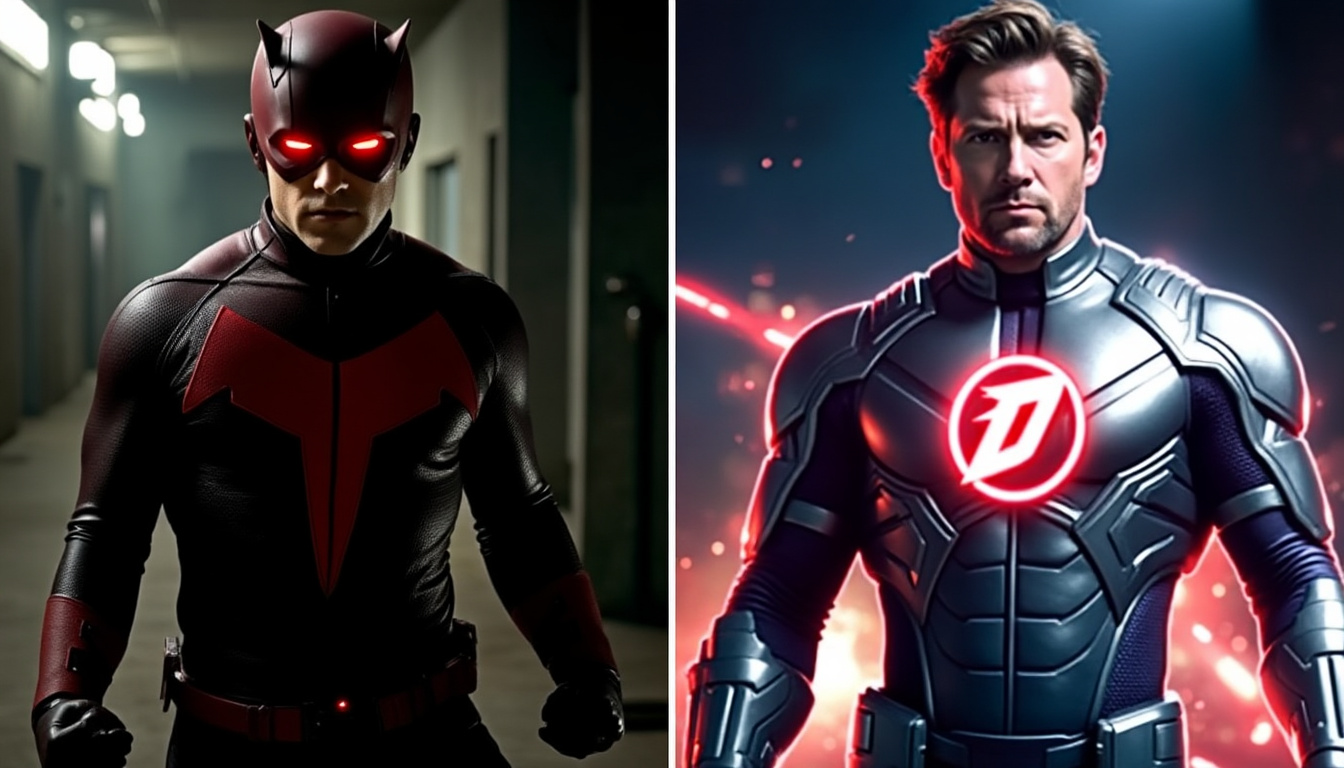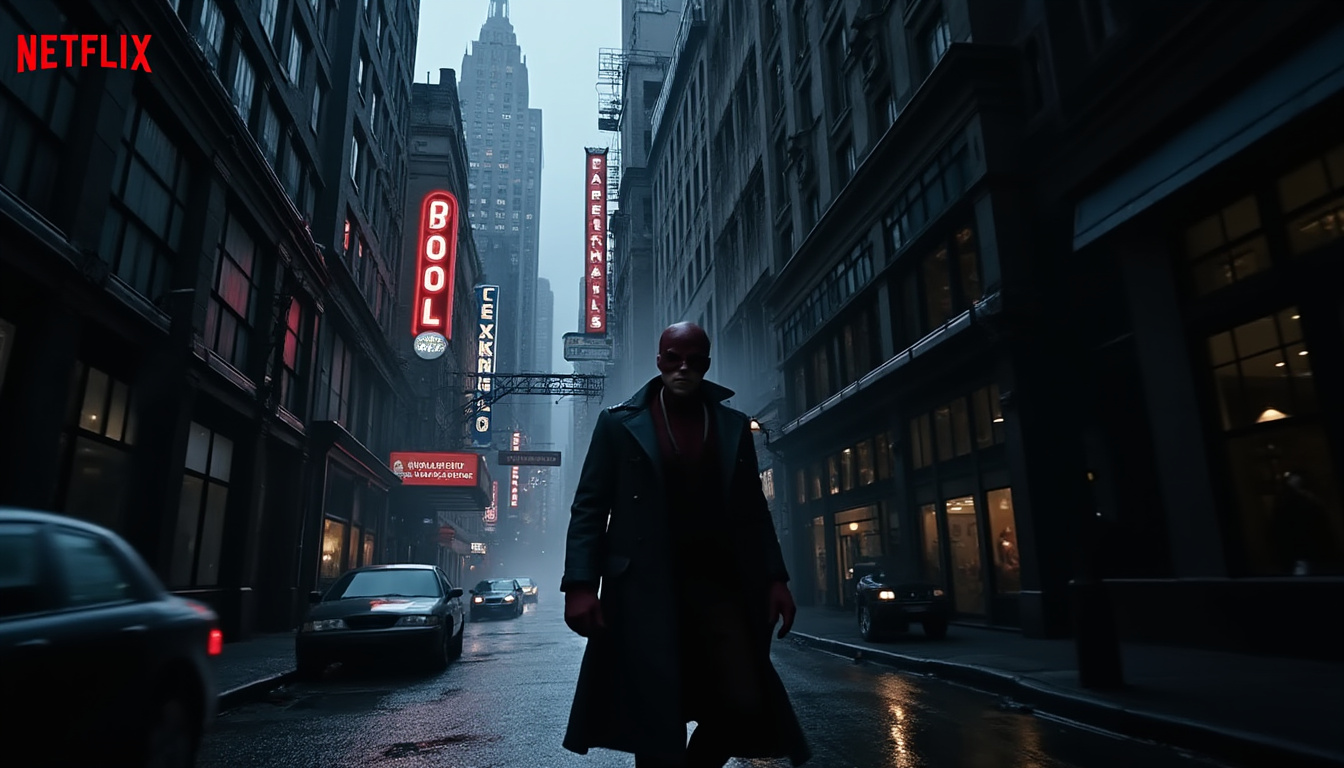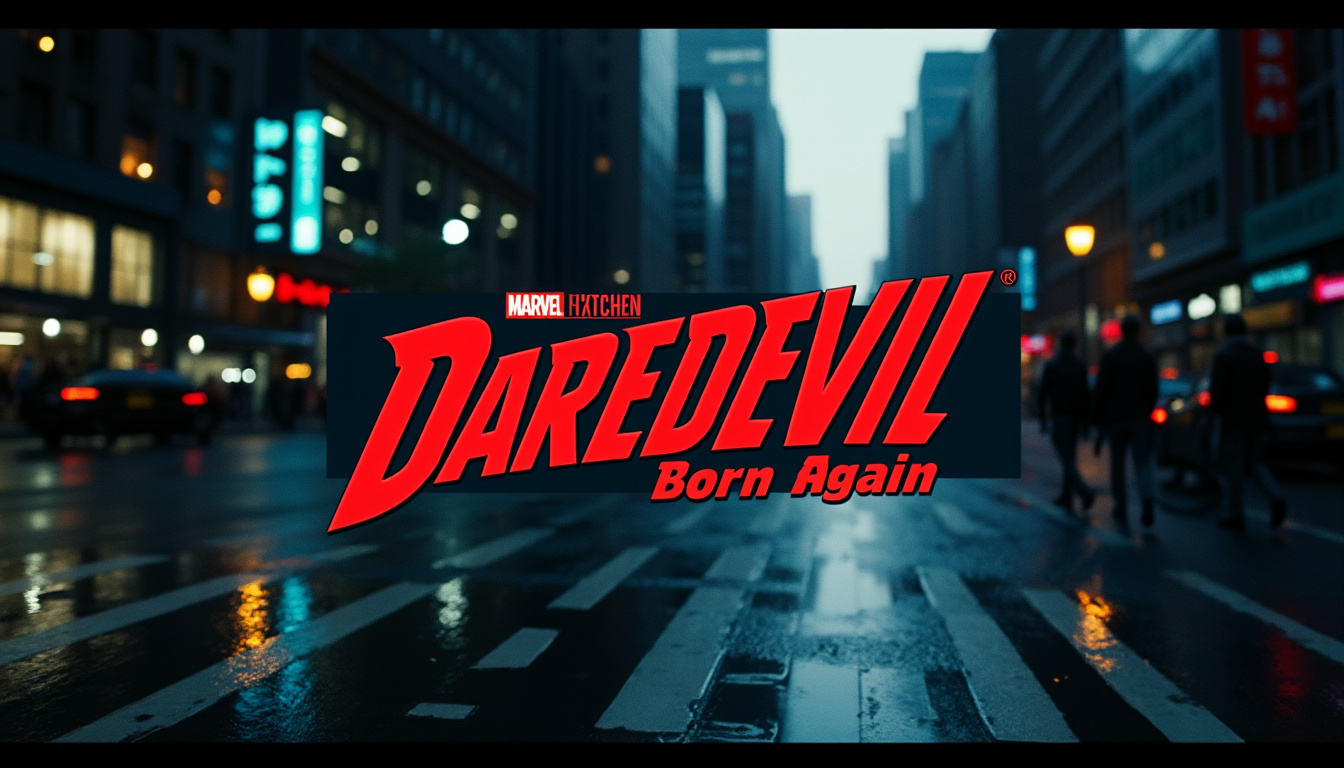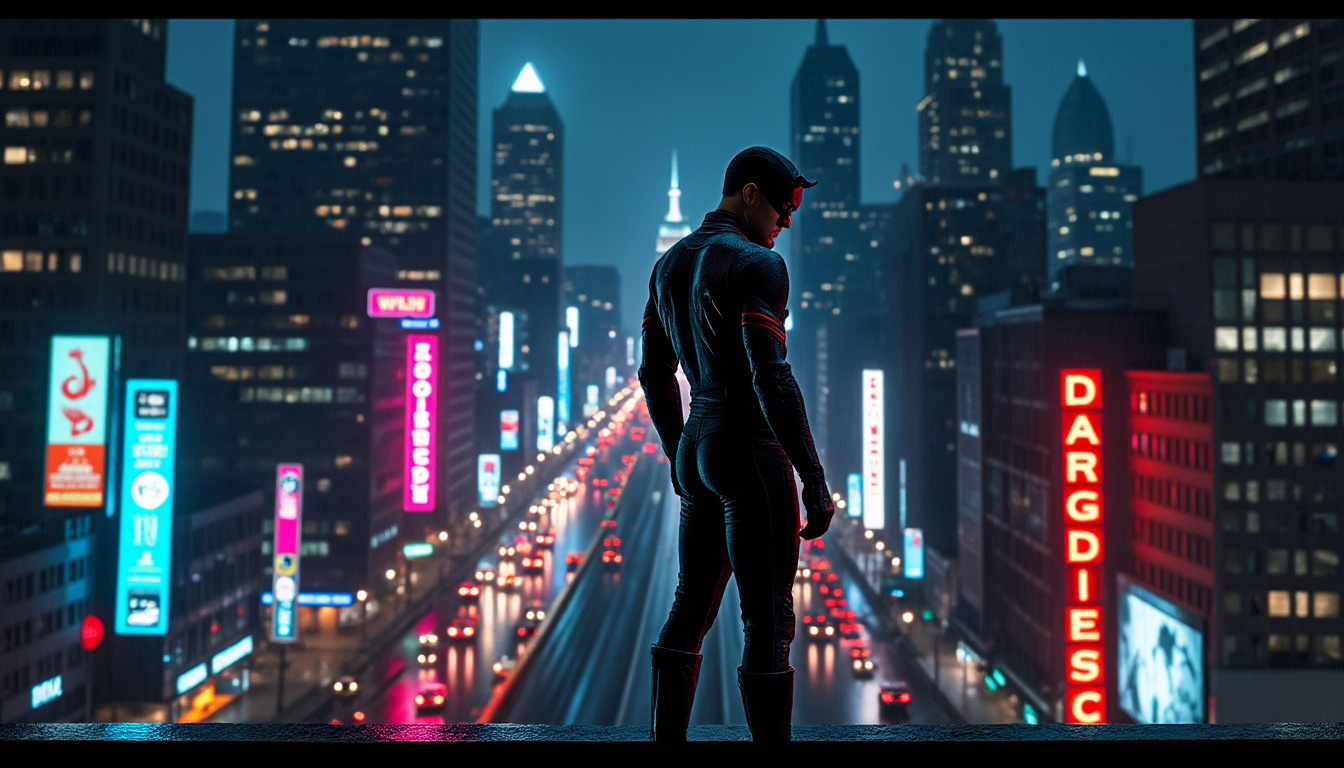The world of superhero adaptations has witnessed many transformations over the years, but few have been as impactful as the transition of Daredevil from the Netflix platform to the Marvel Cinematic Universe (MCU) iteration, titled “Daredevil: Born Again.” This series has generated substantial buzz, particularly concerning its opening sequence. The directors recently revealed the original vision for the opening, shedding light on the creative thought process that went into reimagining this beloved character’s re-entry into mainstream pop culture. What emerged was not only an unveiling of their initial ideas, but also a testament to the evolving landscape of superhero storytelling.
Daredevil’s Evolution from Netflix to Disney+
When Marvel decided to bring Daredevil back into the fold, there was a palpable sense of excitement among fans. Originally aired on Netflix, the previous series earned a dedicated fanbase and showcased a darker, grittier take on the superhero genre. However, the transition to Disney+ required adjustments to mesh with the broader MCU narrative. This move entailed not only shifting tonal elements but also redesigning how characters introduce themselves to new audiences.

The Role of the Directors and Creative Team
Showrunner Dario Scardapane, along with a talented team of directors, was responsible for crafting the new vision. Initially, the writing team led by Matt Corman and Chris Ord was replaced following a creative overhaul in September 2023. With directors such as Michael Cuesta, Jeffrey Nachmanoff, David Boyd, along with the addition of lead directors Justin Benson and Aaron Moorhead, there was a collective determination to preserve the essence of Daredevil while also broadening its appeal.
The directors recognized the importance of the opening sequence as it sets the tone for the series. However, during a discussion with The Hollywood Reporter, they revealed that the original vision underwent significant changes. Initially, the series was supposed to begin with an intimate portrayal of Matt Murdock donning his Daredevil suit in a moment laden with grief following a tragic event.
The Impact of Creative Revisions
As conversations evolved, it became clear that the original direction required significant alterations. Aaron Moorhead described the initial opening scene, illustrating a heartbreaking image where Matt Murdock, dressed in his suit, removed his mask to reveal profound sadness and tears. This poignant moment was intended to encapsulate the emotional weight of the character’s struggles after the demise of Foggy Nelson, a pivotal figure in his life.
However, as the writing team engaged in the creative process, they realized that this single scene did not do justice to the complexities of Matt’s character or his journey. It prompted reframing the narrative to accommodate a full episode dedicated to laying groundwork for Matt’s emotional turmoil. Jeffrey Nachmanoff’s reflections on the challenges of shooting the planned sequence emphasized the impracticalities of executing a momentous scene without sufficient context. This realization led to the birth of a whole episode that serves to transition audiences into Matt’s world more effectively.
- Original Intent: Emotional depth in the opening scene featuring Matt’s grief.
- Realization: Need for further context through a dedicated episode.
- Collaborative Effort: Multifaceted approach with input from various directors.
| Director | Previous Works | Contribution to Daredevil: Born Again |
|---|---|---|
| Michael Cuesta | Homeland, Dexter | Retained during the overhaul process |
| Jeffrey Nachmanoff | Emergency Landing, The Day After Tomorrow | Contributed to vision shift during creative changes |
| David Boyd | Game of Thrones | Retained as director post-overhaul |
| Justin Benson | The Endless | New lead director bringing fresh perspectives |
| Aaron Moorhead | The Endless | Creative insights on the narrative overhaul |
Artistic Choices and Challenges in Opening Sequences
The opening credits of any series serve a dual purpose: they introduce viewers to the world’s aesthetic, while also foreshadowing themes and events to unfold. In the case of “Daredevil: Born Again,” the sequence had to honor its Netflix predecessor while simultaneously breathing new life into the character.

Tools of the Trade: Visual Storytelling in the MCU
The directors aimed to create a connection between the character’s physical struggles and his emotional battles. The original opening intention was rich with visual cues that played into the thematic essence of duality—Matt Murdock as the attorney versus Daredevil as the vigilante. This tension, beautifully encapsulated through color grading, camera angles, and visual metaphors, emphasizes the gravity of his decisions as both a hero and a civilian.
Yet, incorporating these elements wasn’t without challenges. The creative overhaul highlighted the need to marry storytelling with visual aesthetics effectively. As the team engaged with viewers’ expectations and the overarching MCU narrative, the opening sequence evolved into something that promotes greater anticipation for each episode without losing its character-driven focus.
Lessons Learned from the Original Sequence
The revelations surrounding the original opening sequence reflect a growing trend in television where creators are required to adapt in real-time to meet audience expectations and storytelling principles. Nearly every major series in the superhero genre must grapple with balancing character development against ensemble dynamics.
- Importance of emotional context in character-driven narratives.
- Need for fluid storytelling that transitions seamlessly between themes.
- Integrating visual charm without forfeiting narrative depth.
| Challenge Faced | Resolution |
|---|---|
| Emotionally heavy original opening | Redesigned to include broader narrative context |
| Balancing aesthetics and storytelling | Focused on visual storytelling techniques |
| Audience expectation management | Engaged in audience feedback during development |
The Future of Daredevil: Born Again and the MCU
Currently streaming on Disney+, “Daredevil: Born Again” has embarked on a journey that promises to further explore the complexities of its characters, including the ramifications of Foggy Nelson’s death on Matt Murdock. The impact of creative decisions in the season’s introductory phase will likely reverberate throughout its plotline, shaping audience engagement across the remaining eight episodes.

Intentions for Future Seasons
As a result of the groundwork laid in the first season, second season aspirations are being developed and enhanced by fan theories, casting choices, and emerging trends in both comic adaptations and televised narratives. The anticipation surrounding season two, (slated for potential release in March 2026) will further demonstrate the evolving relationship between content creators and audiences. Marvel Studios has the opportunity to refine storytelling dynamics based on viewer reception and industry trends present in platforms like Hulu, Amazon Prime Video, and even Warner Bros..
- Exploring deeper character dynamics in upcoming episodes.
- Integration of fan theories into storytelling processes.
- Future rewrites based on viewer feedback.
| Release Scheduling | Premiere Dates | Expected Episodes |
|---|---|---|
| Season 1 | Now streaming | 8 episodes |
| Season 2 | March 2026 (tentative) | To be determined |
Viewer Reactions and Anticipation
The unique decision to share insights about the original opening sequence has sparked significant conversation among audiences already invested in the Daredevil franchise. Initial reactions have been overwhelmingly positive, emphasizing the emotional weight character arcs possess when given the proper narrative foundation. The anticipation surrounding the series will only grow, particularly as viewers reflect on what was lost in the original vision versus what was ultimately presented.
Community Engagement and Feedback Loops
As creators become more attuned to audience feedback, there will be increased interaction between the viewing public and creative teams. Utilization of platforms such as Instagram and Twitter allows fans to voice their perceptions, providing valuable data for showrunners and writers. The ongoing dialogue between fans and creators is likely to shape the trajectory of future Marvel projects, enhancing the depth and resonance of character arcs within the overarching narrative.
- Assessment of viewer feedback through social media channels.
- Incorporation of audience perspectives into plot developments.
- Encouraging engagement through promotional outreach.
| Viewer Reaction | Descriptive Feedback |
|---|---|
| Positive | Connection to the character’s emotional depth |
| Neutral | Curiosity about how the original vision differs |
| Negative | Dissatisfaction with changes in direction |
In this ever-evolving landscape of superhero narratives, “Daredevil: Born Again” stands as an example of how creators balance audience expectations against the necessary evolution of storytelling. The original vision for the series may have shifted, but the heart of the story remains intact, informing the future direction of not just Daredevil, but the entire MCU franchise.


